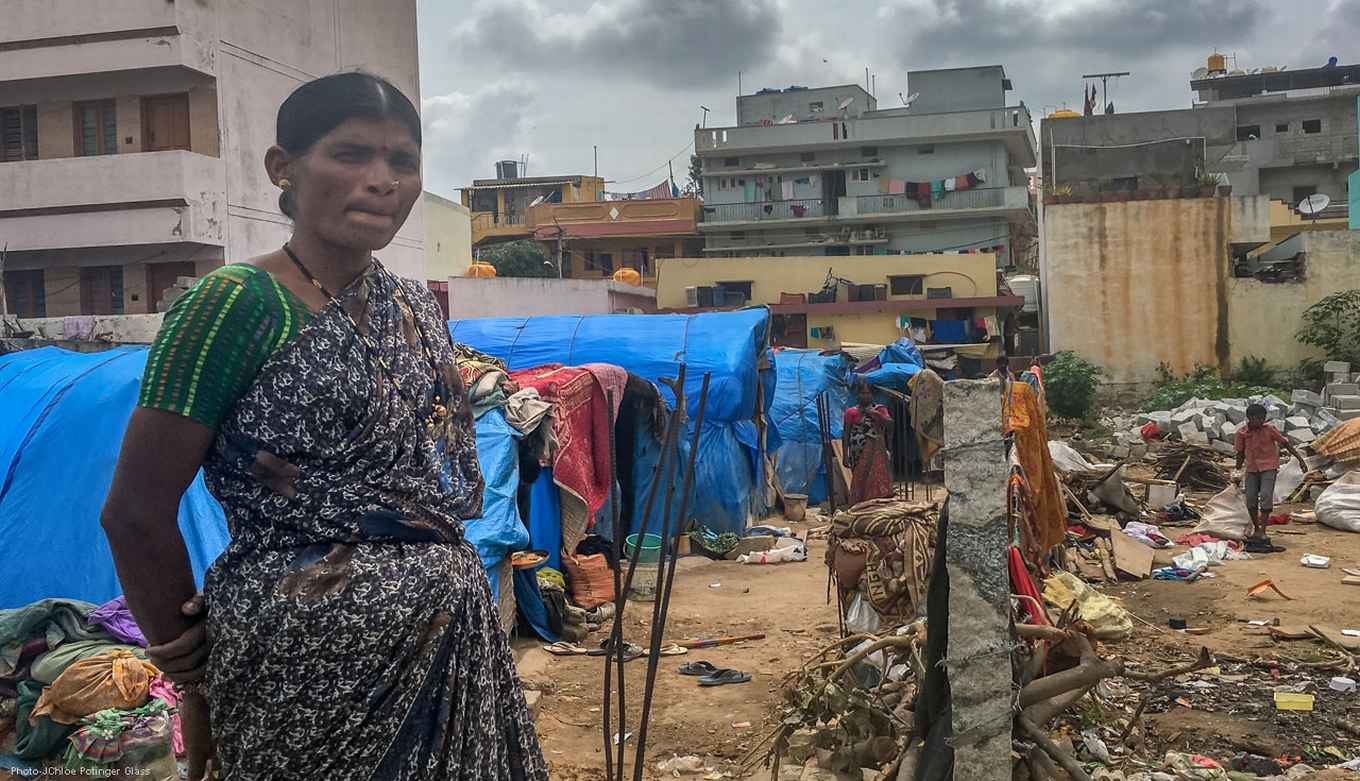High-resolution computer model reveals new insights on poverty in slums
7 March 2023

According to the United Nations, in 2018, approximately one billion people lived in slums (bron). Any kind of shock, like a flood, illness or job loss, makes them extra vulnerable. In order to understand poverty and the impact of climate change on poverty in slums researcher Debraj Roy of the Computational Science Lab (CSL) of the Informatics Institute uses a unique computational model. The model simulates the behaviour of up to millions of interacting people ('agents' in the model) and uses detailed empirical data that are carefully collected from slum dwellers. This microscopic model makes it possible to study poverty in greater detail and with much fewer assumptions than traditional macroeconomic models do.
Social capital
With this agent-based model, Roy and his collaborators gained a couple of insights over recent years. Roy: 'In one of my publications I showed that for people living in slums social capital [the network of family, neighbours and friends] plays an important role in accumulating financial capital. For example, parents in slums don't send their children to daycare but may use their social capital to take care of them while working. Whenever government action is taken to lift them out of poverty, the role of their social capital should be considered.'

The question is what kind of policies are required to mitigate the effect of climate change on poverty?Debraj Roy
Unfortunately, this often doesn't happen. For example, one of the policies sometimes used is to resettle individuals from the slum to less accessible parts of the city. It turns out that this completely disrupts their social capital. Roy: 'They move from having a lot of social capital in the slum to having zero social capital in their new place, which makes them very vulnerable.'
Multidimensional
The biggest mistake in social policies is to treat poverty as a one-dimensional phenomenon in which only money can help, concludes Roy. 'The idea of providing economic assistance and expecting that this is enough to get them out of poverty doesn't always work. The problem is that people easily fall back into poverty as soon as there is a shock. It is clear from our and similar work that poverty in slums must be considered multidimensional. Apart from financial capital, you also must consider physical capital like housing, natural capital like land, social capital like friends and family and human capital like health and education.'
One of the most important open questions for Roy is how interventions along these different dimensions change the cognitive appraisal of individuals. For example, how does it improve their decision-making, self-efficacy, their perceived control over their future and their aversion to risk. All these factors are important to move out of poverty.

Detailed computational models
Detailed computational models like Roy builds are the ideal tool to study this multidimensional character of poverty. The scientists fed their model with data that are validated both on the actual microscopic behaviour of people living in slums and on the macroscopic geographical change of slums over a period of decades. 'Usually, slum dwellers are very skeptical of researchers,' Roy says, 'but by working with local organizations and community leaders we gained their trust. We also intend to convey the insights from our research to the community.'
Because Roy and his colleagues observed that certain shocks make people living in poverty extra vulnerable, they started thinking about the effect of climate change. Roy: 'There is a lot of attention for mitigating climate change by reducing CO2-emissions, but there is too little attention for adaptation or, as is often the case for people living in poverty, the lack of adaptation. Recent studies have analyzed the effect of frequent flooding on the price of houses in the Philippines, the US and the Netherlands. This has shown an effect of climate gentrification: in areas with a high risk of flooding rich people sold their houses and poor people moved in. That made the poor people even more vulnerable, because then they faced more shocks of flooding.'
How people deal with climate or other shocks depends a lot on whether there are huge inequalities between cultural groups based on characteristics like ethnicity, religion or race. 'Generally, people from marginalized groups are more vulnerable', says Roy.
Policymakers
The aim of agent-based modelling of poverty is to help policymakers assess different strategies before implementation. In this context, Roy and colleagues from the Delft University of Technology, the International Red Cross and the Netherlands eScience Centre started in 2021 a project called Computing societal dynamics of climate change adaptation in cities. Roy: 'The question is what kind of policies are required to mitigate the effect of climate change on poverty? The Red Cross does a lot of interventions in climate-prone areas both in developing and developed countries. We want to give the Red Cross a tool to experiment with different scenarios and find out what works best.'
Research Information
Some key publications:
[1] Roy, D., Palavalli, B., Menon, N., King, R., Pfeffer, K., Lees, M., & Sloot, P. (2018). Survey-based socio-economic data from slums in Bangalore, India. Scientific data, 5(1), 1-9.
[2] Roy, D., & Lees, M. (2020). Understanding resilience in slums using an agent-based model. Computers, Environment and Urban Systems, 80, 101458.
[3] Mutlu, A., Roy, D., & Filatova, T. (2023). Capitalized value of evolving flood risks discount and nature-based solution premiums on property prices. Ecological Economics, 205, 107682.